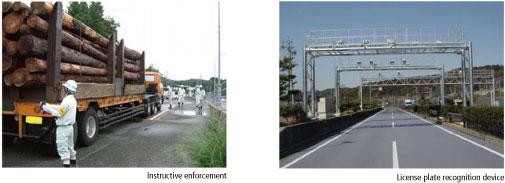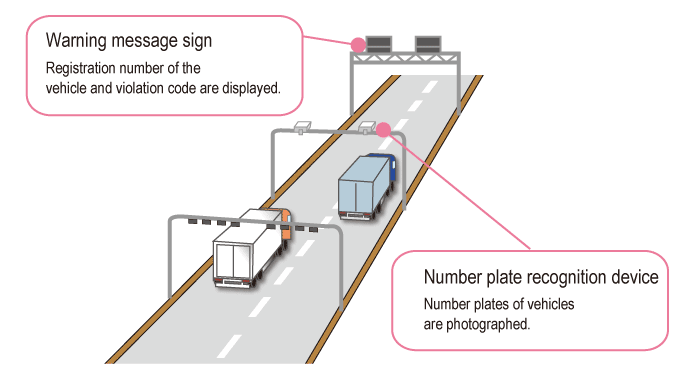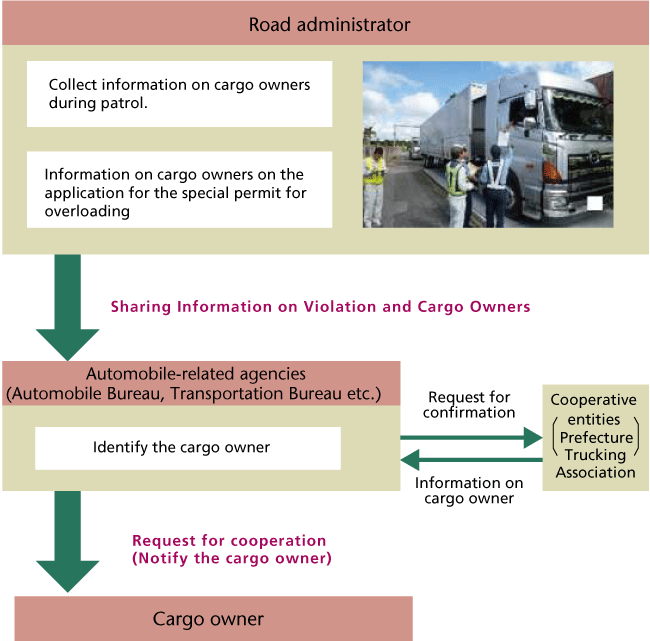Freight Transport
1. Approval system for the use of special vehicles on roads
Road administrators are authorized to permit the drivers of vehicles that exceed the size or weight limits to use the road, but only after the road administrator examines the vehicle’s structure and cargo and determines that there are no alternatives. In these cases, the road administrator will put certain conditions in place to protect the roads and to prevent any potential danger to other road users. Road fatigue, which is caused by oversize or overweight vehicles, can have a significant impact on roads and pavement. In order to utilize our road stock effectively in the future, it is important to ensure the road structures are properly maintained.
2. Controlling illegal vehicles
1) Instructive enforcement
Drivers are told to pull over at "instruction stations", where
vehicle weights and sizes are measured. If the vehicle exceeds
the size or weight regulation, the drivers are ordered or warned
to reduce the weight and size of the vehicle by splitting the
cargo.
2) Weigh-in-motion (WIM)
A WIM device automatically measures a vehicle’s gross weight
as the vehicle drive over a measurement site. If the vehicle is
over the weight regulations, it then determines if the
overweight vehicle has a permit by accessing the database.
Based on the results, repeated violators will be given an
instructive warning.

■Weigh-in-motion

3. Stringent Enforcement of Illegal Overloading
To protect roads more effectively, the MLIT is introducing ICT and a new mechanism to hold cargo owners accountable for the violation of overloading which may have significant impacts on road deterioration.
Background/data
-Although the number of illegally overloaded vehicles accounts for only 0.3% of all vehicles, their impact on bridges accounts for 90% of all traffic.
-30% of special vehicles are overloaded (as of FY2017)
-15% of haulers reported that they have been asked for illegal overloading by their customers.
Note: Survey for Japan Trucking Association (by the MLIT)
-WIM systems have been installed at 42 locations on National Highways under the direct jurisdiction of MLIT and 241 locations on Expressways.
○In FY 2018, the MLIT introduced a new regulation that holds cargo owners accountable for illegal violations in addition to the haulers:
-Collect information of cargo owners during patrol and advisory contact with the cargo owner.
-Ensure that information on the cargo owner is included on the application for the special permit for overloading
Utilize ICT for efficient enforcement
-Consider adding WIM installations and other more stringent enforcement criteria
-Introduce a mechanism to encourage OBW installation for self-checking the load weight
Disqualify serious violators for the large/frequent expressway users discount
■Process to Hold Cargo Owners Accountable for Overload Violation

